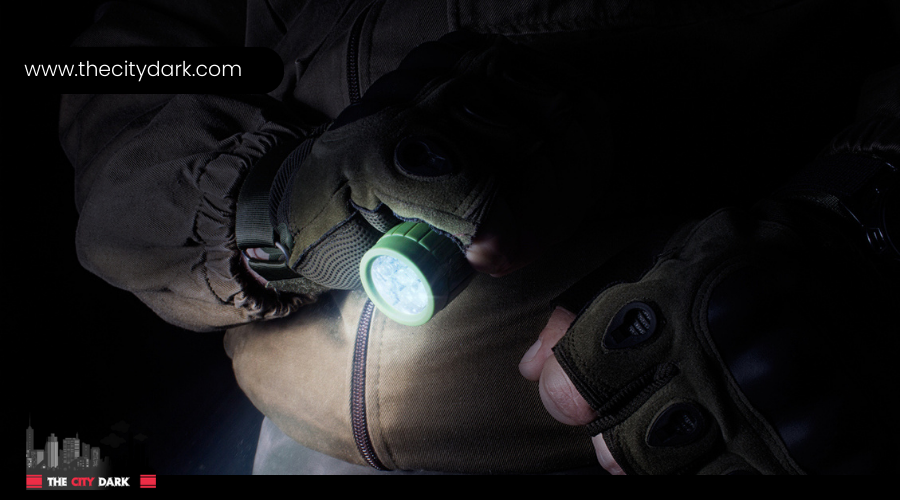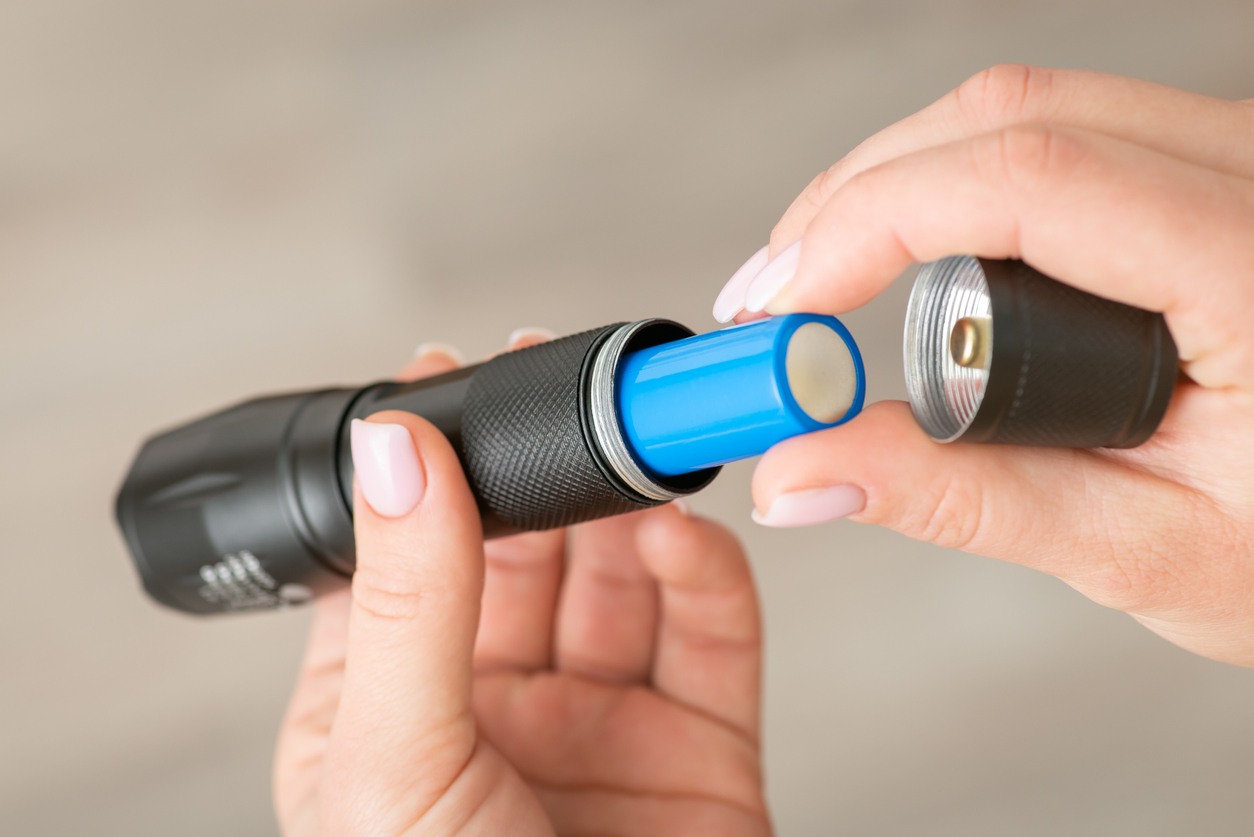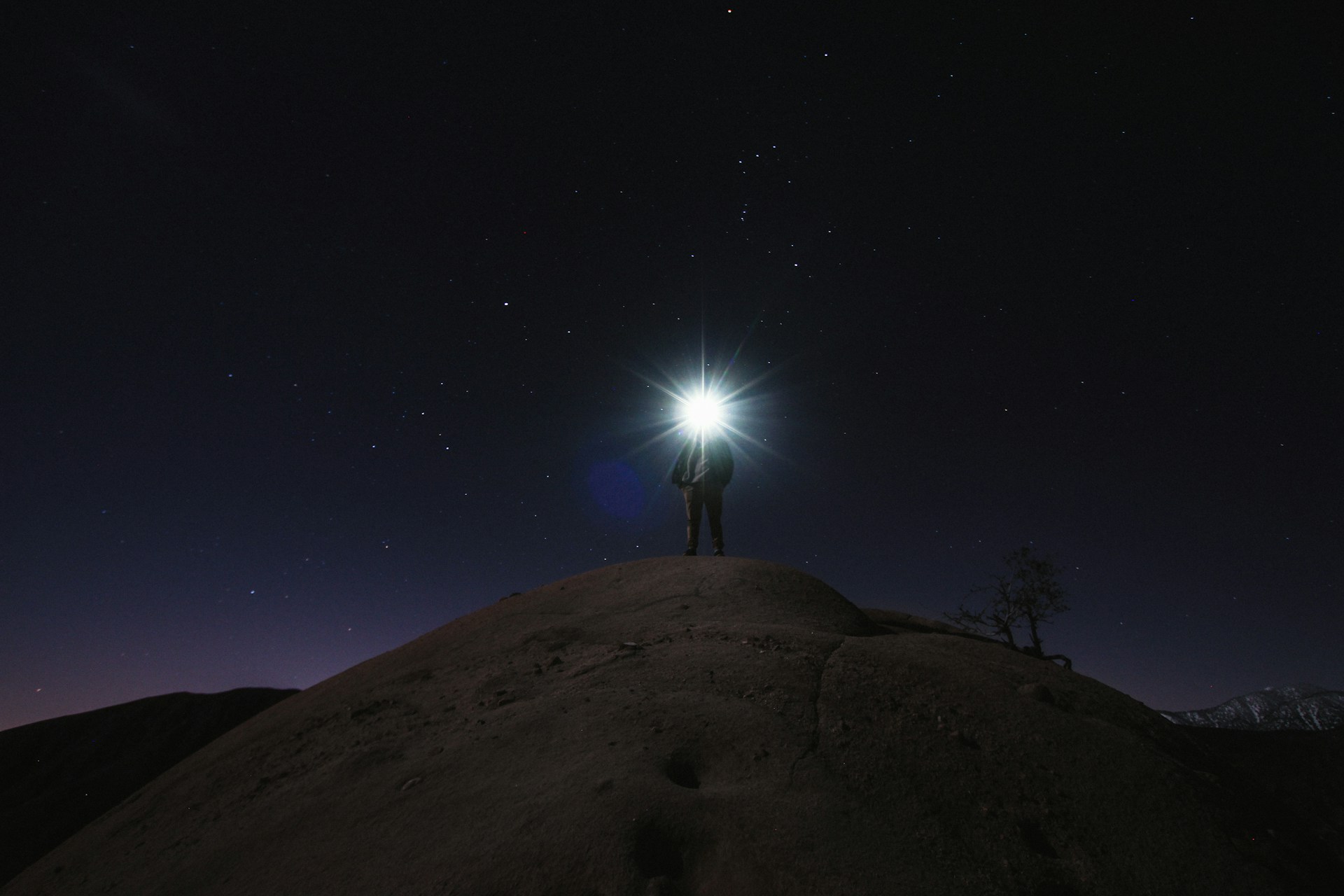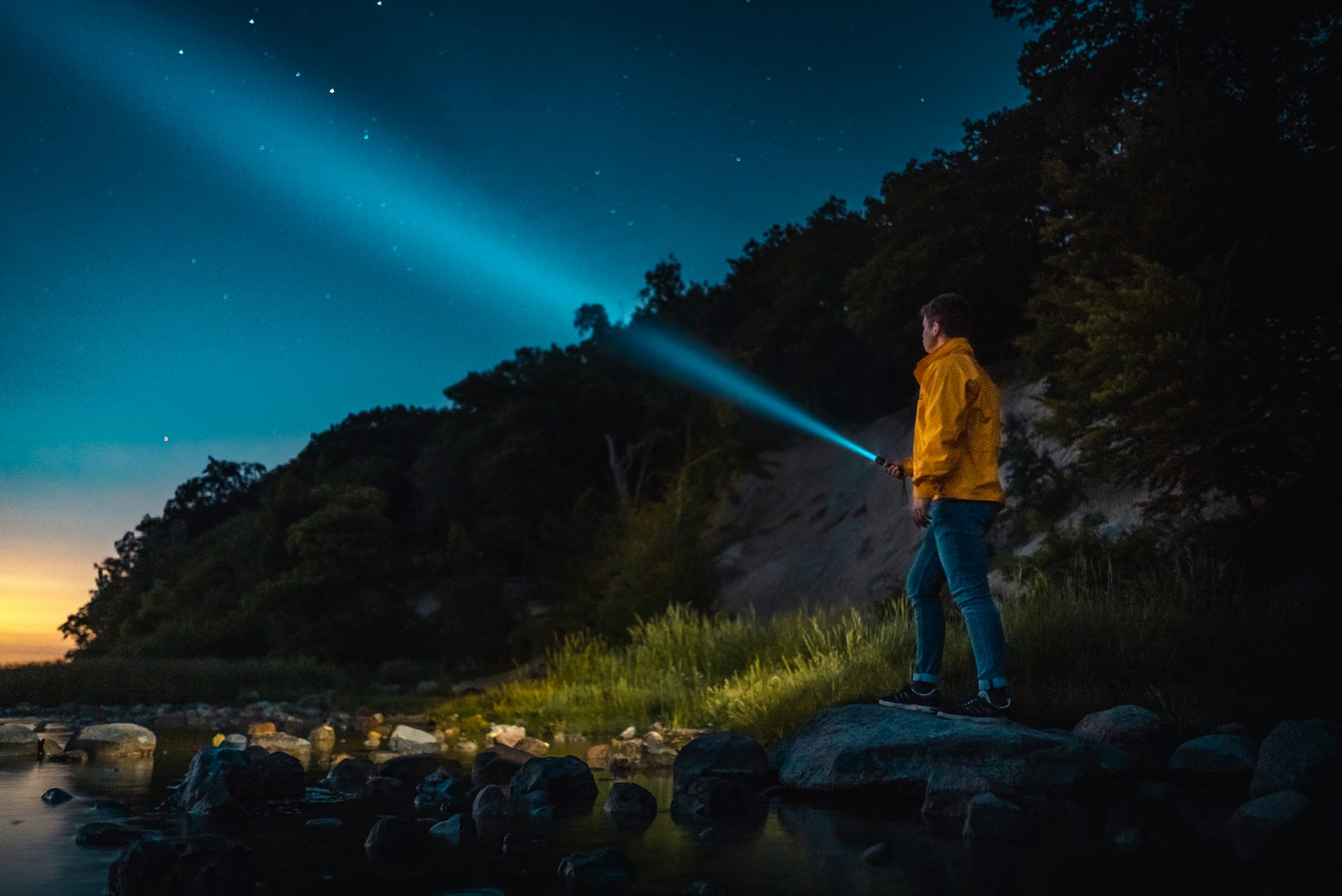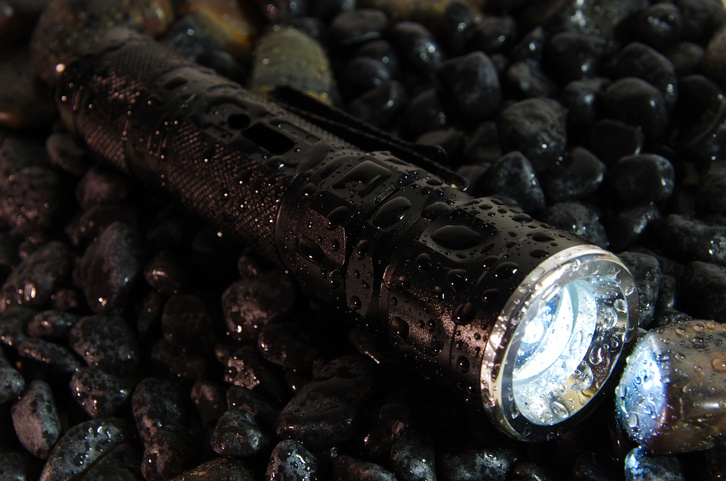Have you ever wondered what separates a seasoned survivalist from a novice when the sun sets and the shadows lengthen? Your flashlight, an unassuming tool by day, becomes your lifeline at night, but it’s not just about having one—it’s about knowing how to use it.
Mastering techniques like signaling for help, preserving battery life, and tactical illumination can drastically increase your chances of not just surviving, but thriving in the darkness. From navigating treacherous terrain to deterring potential threats, the right flashlight strategies are crucial.
While we’ve touched on some key techniques, there’s a wealth of knowledge to uncover that could one day tip the scales in your favor. Stick around, and you’ll discover how to wield this simple device like a true survival expert.
Key Takeaways
- Signaling for help: Use the SOS signal and various flashlight techniques to attract rescuers during emergencies.
- Preserving battery life: Utilize lower brightness levels, turn off the flashlight when not in use, and choose a flashlight with long battery life or rechargeable batteries.
- Tactical illumination: Adjust brightness settings, consider weapon-mounted lights for target identification, learn specific techniques, and use light to disorient threats.
- Navigating in darkness: Choose between a headlamp and handheld flashlight based on needs, use hands-free options for general navigation, and focus on safe and efficient movement in the dark.
Signaling for Help
When you’re stranded in the dark, signaling for help can save your life, and a flashlight offers various effective ways to catch a rescuer’s eye. With the right techniques, your flashlight becomes a beacon in the night, guiding help to your location.
Start by using the SOS signal, a universal distress call. Flash your light three short, three long, and then three short bursts again. This pattern, easily recognized by rescuers, maximizes the chance of being spotted. discover more about pmc x tac here
Your flashlight’s strobe function can also draw attention. The rapid blinking of bright light is hard to miss, even from a distance. If your flashlight has a high lumen output, use it to create a powerful beam towards the sky in open areas, creating a signal visible for miles.
For more subtle signaling, wave your flashlight back and forth. This reflective signal, especially with a high light output, can catch a rescuer’s eye. Alternatively, turn your flashlight on and off in a distinct pattern, like three short bursts followed by a longer one, to create a recognizable distress signal.
Pairing your flashlight with a signaling mirror during the day amplifies your call for help, ensuring you’re noticed. Also check out https://x-ringsupply.com/product-category/p365-slides as well.
Preserving Battery Life
While mastering signaling techniques with your flashlight is crucial for nighttime survival, it’s equally important to know how to preserve its battery life to ensure it’s ready when you need it most. Preserving battery life isn’t just about having a light source; it’s about ensuring you’re not left in the dark when you need illumination the most.
To help you extend the long battery life of your flashlight, consider these practical tips:
- Use lower brightness levels to significantly save power, especially when ambient light is sufficient.
- Utilize the dimming feature if available, to use just enough light without draining the batteries.
- Turn off the flashlight when it’s not in use; even short periods can add up to substantial savings.
- Opt for a flashlight that can use a single AA battery or rechargeable batteries to ensure you’re always prepared.
| Strategy | Benefit | Emotion Evoked |
|---|---|---|
| Lower Brightness Levels | Extends battery life, saves energy | Relief, Security |
| Utilize Dimming | Precise control, conserves power | Confidence, Preparedness |
| Turn Off When Not in Use | Preserves battery for when it’s truly needed | Safety, Assurance |
| Use Rechargeable/AA Batteries | Reduces waste, ensures readiness | Responsibility, Trust |
Tactical Illumination
Tactical illumination leverages your flashlight as a vital tool for self-defense and navigating survival situations after dark. Whether you’re using a tactical flashlight or a hand-held flashlight, the ability to control your environment with light can’t be overstated. With the right techniques and tools, you can enhance your night vision, disorient potential threats, and safely maneuver through low light conditions.
Here are three key points to consider when using tactical illumination:
- Brightness Settings: Modern LED lights come with adjustable brightness settings. You can use a lower brightness to preserve night vision or a higher setting to disorient an aggressor.
- Weapon-Mounted Lights: For those trained in firearm use, weapon-mounted lights can provide a significant advantage in low light situations. They allow for better target identification and aim without compromising your grip or stance.
- Tactical Techniques: Learning specific techniques, such as the FBI, Harries, and Neck Index methods, can drastically improve your ability to handle a flashlight in conjunction with a weapon or when navigating difficult terrain.
Utilizing a tactical flashlight effectively requires understanding its capabilities, from creating diversion tactics to coordinating action in the dark. Remember, your flashlight isn’t just a light source; it’s a tool that, when used correctly, can save your life.
Navigating in Darkness
Navigating through the dark significantly benefits from the right choice of a headlamp or handheld flashlight, allowing you to move safely and efficiently. When you’re moving quickly through a dark room, the amount of light your source emits is crucial. A headlamp offers hands-free operation, making it easier for you to focus on navigating in darkness without holding a light. However, a handheld light can be directed more precisely where you need it.
| Feature | Headlamp | Handheld Light |
|---|---|---|
| Hands-Free Use | Yes | No |
| Directional Control | Fixed | High |
| Task Suitability | General Navigation | Specific Tasks |
| Additional Uses | Limited | Versatile |
Choosing between a headlamp and a handheld flashlight depends on your specific needs in the dark. If you need both hands for tasks while moving, a headlamp’s your best bet. For tasks requiring directed light or if you’re using the light for non-navigational purposes, a handheld light might be more suitable. Remember, navigating in darkness isn’t just about having light; it’s also about how you use it to move safely and efficiently through the night.
Emergency Fire Starting
In an unexpected twist, your flashlight, equipped with just a single AA battery, can also serve as a lifesaving fire starter. You might find yourself in a situation where starting a fire is crucial for warmth, light, or signaling for help. Here’s how to use your flashlight’s AA battery for emergency fire starting:
- Find a small strip of foil: A gum wrapper works perfectly. It’s something you’re likely to have with you, and it’s light enough to carry without noticing.
- Prepare your tinder: Before you start, gather small twigs, dry leaves, or any flammable material around you. You’ll need this to catch the flame from the foil.
- Create a flame: Touch both ends of the foil to the battery terminals. The current will heat the foil and create a spark or flame. Quickly transfer this to your prepared tinder.
This technique is a one-time use, so it’s less likely to diminish the battery’s run time significantly. Remember, the bottom line is to always be prepared. Carrying a flashlight that requires only a single AA battery and a piece of foil makes you less likely to be caught off guard.
Defensive Uses
While your flashlight’s ability to start a fire is invaluable for survival, it also serves as a powerful tool for self-defense in dangerous situations. Imagine you’re walking back to your campsite at night when you suddenly sense danger. Here’s where the FireHawk Tactical Flashlight, the best EDC (everyday carry), shines—quite literally. Its intense LED beam, akin to high-beam headlights, can blind an attacker temporarily, giving you a crucial advantage. By swiftly moving the white light focused directly into their eyes, you impair their vision, a technique law enforcement uses regularly.
But it’s not just about blinding. If an attacker gets too close, your flashlight is more than a beacon; it’s a weapon. With metal prongs and a sturdy grip, it can be used effectively as a melee weapon. You’ve probably never thought you’d use your flashlight in such a way, but in those one-time, life-or-death situations, techniques like using two hands to keep the light focused while striking can make all the difference.
Light Discipline
To stay off the radar during nighttime survival, mastering light discipline is essential. You’ve got to minimize your visibility while preserving your ability to see and complete necessary tasks. This requires more than just turning off your flashlight; it’s about smart, strategic use of light.
Here are three key strategies to employ:
- Use Red Light: Switch to low-intensity red light when you need to see without being seen. Red light preserves your night vision and is harder for others to spot, keeping you safe and stealthy.
- Controlled Bursts: When you must use brighter light, do so in brief and controlled bursts. Know EXACTLY what you’re aiming to illuminate, turn on the light, then quickly complete your task. This reduces the chances of drawing unwanted attention.
- Hands-Free Options: Consider using headlamps or flashlights that can be mounted to your gear. This keeps one hand free for other tasks or for self-defense. If you’re using a weapon-mounted light, practice extending it to full extension quickly but only when necessary. This method works especially well in scenarios where you need both light in a dark environment and enough time to react to threats.
Conclusion
In conclusion, mastering flashlight techniques can be a game-changer for your nighttime survival. Always remember to signal for help effectively, conserve battery life, use your light tactically, navigate safely in the dark, and even start a fire in emergencies. Don’t overlook the defensive potential of your flashlight or the importance of light discipline.
With these skills, you’ll be better equipped to handle whatever the night throws at you, ensuring you stay safe and prepared in any situation.

